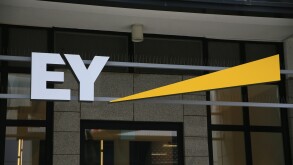
|

|
Khoonming Ho |
Lewis Lu |
The Ministry of Finance (MOF) and the State Administration of Taxation (SAT) jointly issued MOF SAT Circular 101 (2016) on September 22 2016. The circular clarifies the individual income tax (IIT) preferential treatments applying to:
Employee equity incentives: and
The use of rights in technology as capital contributions to Chinese tax resident enterprises.
This circular sets out the incentive qualifying criteria and is supplemented by SAT Announcement 62 on September 28 2016, which provides for the administrative guidelines and detailed implementation rules.
Both circulars are effective from September 1 2016 and they bolster the Chinese government's support for national mass entrepreneurship and innovation to promote Chinese economic structural transformation.
The preferential tax treatments set out under Circular 101 apply solely to unlisted domestic resident enterprises, but it also allows for extended IIT filing deadlines for income derived from stock options, restricted stocks and equity incentives of public listed companies.
Since the annulment in January 2011 of SAT Circular 1030 (2007), which previously governed the IIT treatment of share options granted by unlisted companies, there has been no relevant national tax guidance available in relation to equity incentives for unlisted companies – this has led to inconsistent tax treatment in different tax districts throughout China. The promulgation of Announcement 62 and Circular 101 fills this gap.
The new policy allows for the deferral of taxation on equity awards until the time of disposal. It also reduces the marginal tax rate from 45% (top marginal tax rate applicable to employment related income) to 20%.
To illustrate the potential reduction in the tax burden with a numerical example, before the new rules came out, an employee with equity awards vested at the value of RMB 200,000 ($29,000) could be taxed at 45% (marginal rate). This could result in tax payable of RMB 90,000 on vesting. The shares will then be subject to a further 20% capital gains tax if sold at a premium later on. With an assumed capital gain of RMB 100,000 on disposal, another RMB 20,000 tax liability is due, which results in a total tax bill of RMB 110,000. Under the new rules, and assuming the facts remain the same, taxation of the equity awards would be deferred to the point of share disposal, which relieves the employee from cash flow strain at vesting. As such, the total gain realised from the share disposal should be taxed at 20%, which results in a total tax liability of only RMB 60,000, translating to a reduction of RMB 50,000 in the total tax bill compared to treatment under the old system.
With the rollout of the new rules, China's IIT preferential treatment is now available to equity awards granted by both listed and unlisted companies. The extent of the tax benefit largely depends on the design of the plan, with expert advice essential to ensure appropriate plan structuring.
Khoonming Ho (khoonming.ho@kpmg.com) and Lewis Lu (lewis.lu@kpmg.com)
KPMG China
Tel: +86 (10) 8508 7082 and +86 (21) 2212 3421
Website: www.kpmg.com/cn










